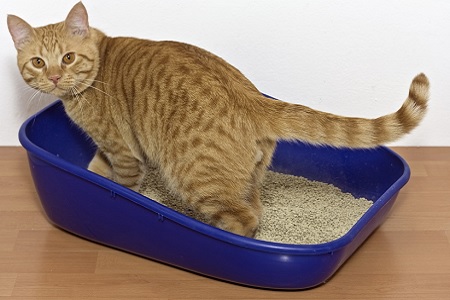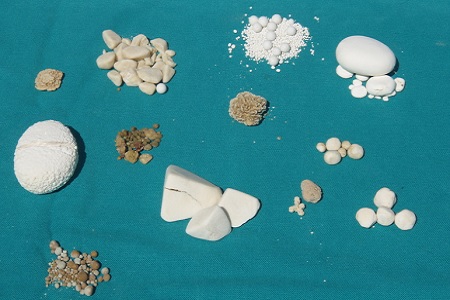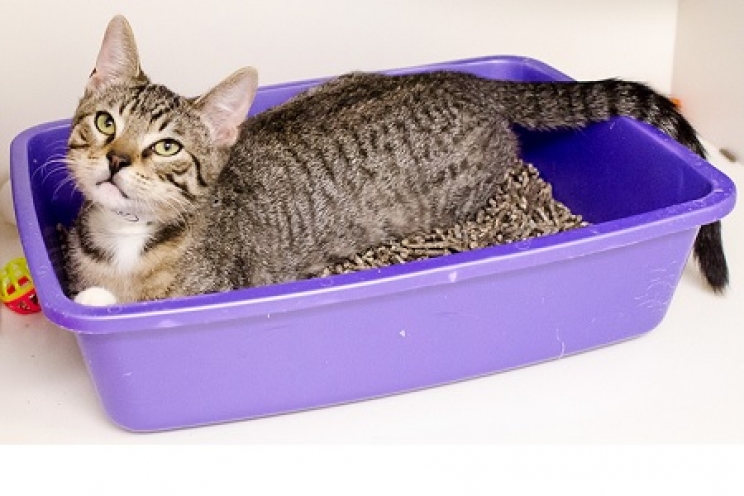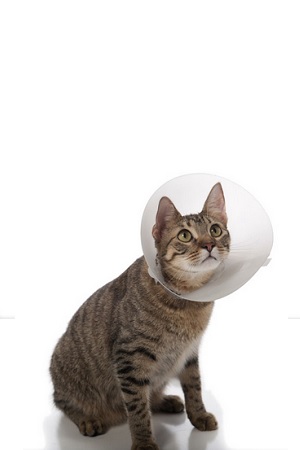The urinary tract of cats is extremely sensitive. One of the most frequent situations that owners find themselves facing is urinary obstruction, which is the cat's inability to "pee". What not everyone knows, however, is that it is a common, but dangerous, condition that requires timely intervention before the kidneys health is permanently compromised. Let's see what are the causes of this problem and how we can intervene.
How urinary obstruction occurs
It is unlikely that the owner will not notice such a situation, since the cat often manifests rather obvious suffering. However, in the days or hours before the actual obstruction, alterations may appear, such as:
- Meows and complains
- He stays still for a long time before he can pee
- He licks his genitals
- Produces few urine, often only drops, but more frequently
- There may be traces of blood in the urine
- He is nervous or aggressive
- Tends to urinate outside the litter box
On the other hand, when there is a total obstruction, no matter how hard the cat tries to urinate, it cannot even emit a drop of pee. He also maintains this position for several minutes, rhythmically contracting the abdominal muscles, but to no avail. If action is not taken promptly, the situation worsens fairly quickly: the cat vomits, is very weak and neurological symptoms may appear.

FLUTD: the true responsible
As we have already explained in the article entirely dedicated to cat's urinary tract problems, FLUTD (Feline Lower Urinary Tract Disease) is the term used to encompass all possible conditions affecting the lower urinary tract of felines, i.e. bladder and urethra. Before analysing it in detail, we need to do a little anatomy review: the kidneys, conveyed through the two ureters towards the bladder, produce the urine and from there it is eliminated outwards through a thin tube, which is the urethra.
In cats, these two structures easily face different types of problems. In particular, among the most frequent we find
-
Bladder stones: just like in humans, the cat can also face this problem, which appears when two possible substances, struvite and oxalates, accumulate and join together inside the bladder. These are crystals of various sizes, which can remain inside the bladder, scratching the walls and thus creating inflammation. In most cases, the reason for this problem is food-related, for example, when the cat drinks too little or his diet involves an excess of magnesium (the main component of struvite stones). In addition, the pH of the urine plays a fundamental role in the appearance of the stones: when the urine is acidic enough (in the cat they should remain within a value of 6-6.5), any deposits of struvite are easily dissolve, which does not happen when, at the on the contrary, they are more alkaline. Normally stones are formed in the bladder, where they can scratch the walls, generating inflammation. An even more serious case occurs when the stones get stuck in the urethra, thus preventing the pee from flowing normally outwards;

-
Urethral plug: this is undoubtedly the most frequent condition, particularly in male cats, whose urethra is narrower. The cells that line the walls of the bladder undergo a periodic flaking, which serves to eliminate the old tissue, which will be replaced by the new one. However, this flaking may increase significantly and other debris may also be added, such as protein substances, blood cells and other types of cells produced by the kidneys and bladder, which may or may not mix with any struvite or oxalate crystals present in the urinary tract . All this material might compact and can get stuck in the urethra, preventing urine from escaping. This situation can occur following various factors, such as stress, an unbalanced diet, the presence of infections or tumours;
-
Idiopathic obstructive cystitis: the term "idiopathic" is used in medicine for all those disorders that are clinically ascertained, but for which a cause cannot be identified or only hypotheses are still underway. In the case of feline idiopathic cystitis, there are no bacteria or wounds underlying inflammation of the bladder, but instead other factors, often neurological in nature. In particular, stress is able to stimulate the cat's brain to send signals to the bladder, which responds by producing numerous substances that stimulate inflammation. According to another hypothesis, however, the cause of this problem would be a reduction of glycosaminoglycans, substances that normally cover the walls of the bladder to protect it from the attack of bacteria. Generally, idiopathic cystitis does not lead to an obstructive nature, but in some circumstances it can lead to occlusions that prevent urine from coming out;
-
Malformations of the urethra: some cats may present, from birth, defects in the development of the urinary tract. In particular, if the urethra is too narrow or has small narrowing in some parts (stenosis), debris (possibly present in the urine) are more likely create obstructions.
All included FLUTD disorders occur especially in the presence of particular situations, such as:
-
Stress: cats can easily stress out and this will mainly affects the health of the urinary tract. Among the most frequent situations that the owners reported are: changing house, cohabitation with other cats or dogs, arrival of guests or a child;
-
Litter: it will seem strange, but often cats do not accept the fact that the litter box is moved from the usual place or that their usual sand is changed. In these cases they can become stressed, refusing to make needs in the litter box or blocking themselves completely;
-
Age and gender: urinary obstruction is more frequent in young or adult male cats;
-
Lifestyle: sedentary lifestyle, boredom and obesity are among the predisposing factors;
-
Nutrition: an unbalanced diet that does not take into account specific nutritional needs for different situations (sterilized, sedentary, overweight cat, etc.) can favour the appearance of stones.
How do we intervene
We must first clarify a fundamental concept: urinary obstruction is a very serious problem and must be treated promptly, because it can have serious consequences, like death. What happens, in fact, is that urine continues to be produced by the kidneys and constantly accumulates in the bladder, without being eliminated. In this way, the bladder dilates more and more, until it loses the ability to contract to expel the urine, and with the passing of the hours it can even burst or cause serious damage to the kidneys.
In addition, all substances that are normally eliminated in the urine - especially nitrogen - will accumulate in the blood, leading to the cat's death. All this process does not escalate within days or weeks, but within 24-48 hours, so you have to take the cat immediately to the nearest clinic without wasting too much time.
The protocol advised in these circumstances is based primarily on the clinical examination, with an X-ray to identify and locate any stones or other conditions. The cat is generally sedated to proceed with unclogging through catheterization: a thin tube is inserted into the urethra to push any plugs present in the urethra into the bladder, thus promoting the escape of urine. The vet will then be able to perform bladder washes to stimulate the bladder to expel the urine again. If the situation does not improve, surgery is needed to remove the cause of the obstruction.
The entire procedure is carried out under sedation, associating painkillers, so the animal will not feel any pain during the unclogging manoeuvre.
It is also very important to proceed with the collection of a urine sample to be analysed, which will be used by the veterinarian to identify the source of the problem (presence of struvite or oxalate crystals, bacteria), associating the most precise therapy.
Once the cat has been unclogged, we will keep him under observation for 48-72 hours, in order to monitor urine production and any impairment of kidney function. In any case, the veterinarian will then be able to provide a more detailed therapy to be administered at home and on the most suitable diet to prevent new episodes. In particular, the specific diet for urinary tract disorders can represent a real life-saver for cats that tend to produce urine rich in crystals or struvite stones.
These foods, in fact, have a composition designed to increase the sense of thirst in the cat and to make their urine more acidic, in order to dissolve the struvite crystals. Sometimes it may be necessary to adopt specific diets for long periods or even for life.
Finally, if stress is identified among the causes of the problem, the veterinarian could propose a consultation by a behavioural expert, who will be able to analyse every potentially stressful aspect of the cat's life.











